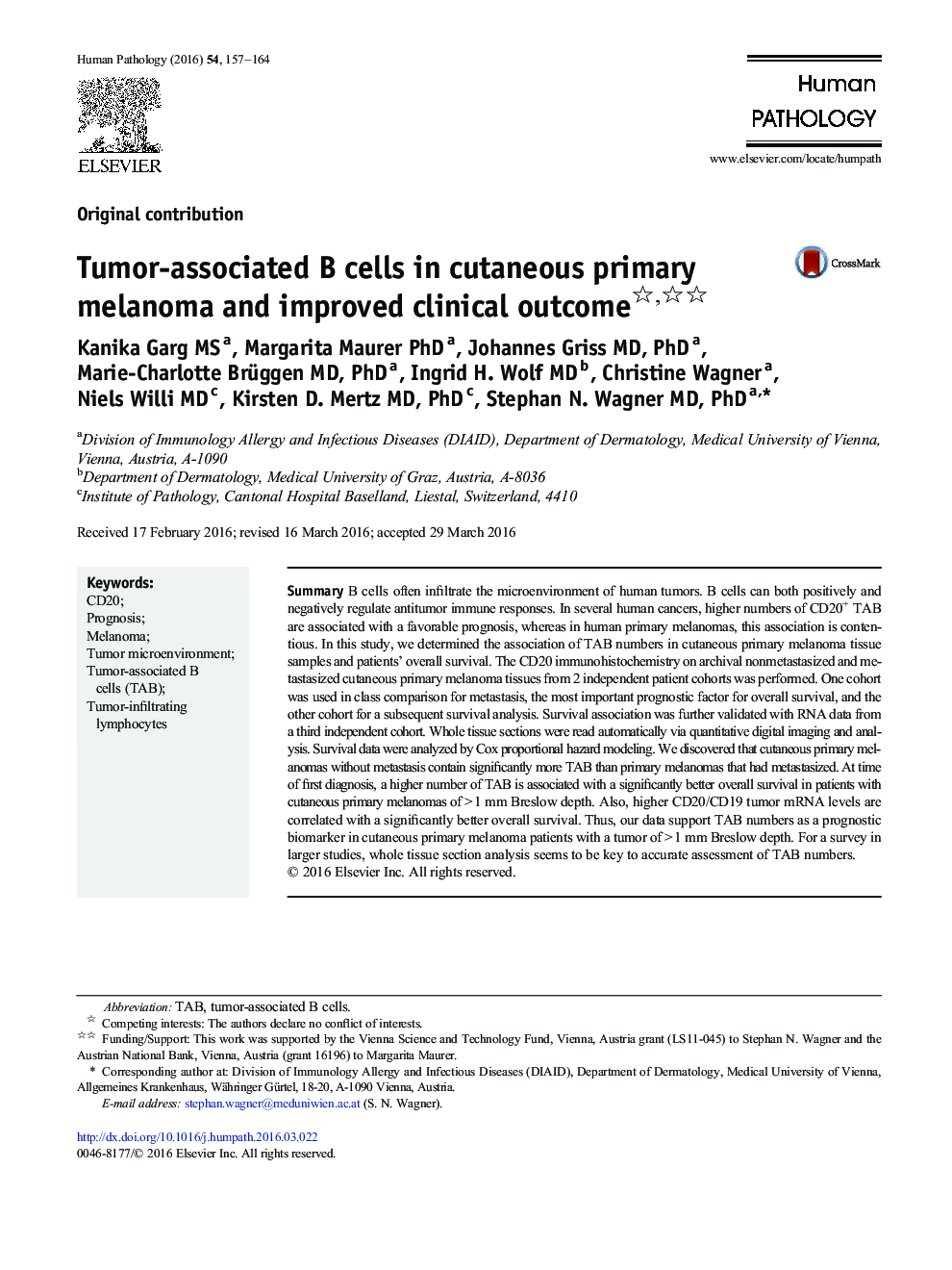| Article ID | Journal | Published Year | Pages | File Type |
|---|---|---|---|---|
| 6215437 | Human Pathology | 2016 | 8 Pages |
SummaryB cells often infiltrate the microenvironment of human tumors. B cells can both positively and negatively regulate antitumor immune responses. In several human cancers, higher numbers of CD20+ TAB are associated with a favorable prognosis, whereas in human primary melanomas, this association is contentious. In this study, we determined the association of TAB numbers in cutaneous primary melanoma tissue samples and patients' overall survival. The CD20 immunohistochemistry on archival nonmetastasized and metastasized cutaneous primary melanoma tissues from 2 independent patient cohorts was performed. One cohort was used in class comparison for metastasis, the most important prognostic factor for overall survival, and the other cohort for a subsequent survival analysis. Survival association was further validated with RNA data from a third independent cohort. Whole tissue sections were read automatically via quantitative digital imaging and analysis. Survival data were analyzed by Cox proportional hazard modeling. We discovered that cutaneous primary melanomas without metastasis contain significantly more TAB than primary melanomas that had metastasized. At time of first diagnosis, a higher number of TAB is associated with a significantly better overall survival in patients with cutaneous primary melanomas of >Â 1 mm Breslow depth. Also, higher CD20/CD19 tumor mRNA levels are correlated with a significantly better overall survival. Thus, our data support TAB numbers as a prognostic biomarker in cutaneous primary melanoma patients with a tumor of >Â 1 mm Breslow depth. For a survey in larger studies, whole tissue section analysis seems to be key to accurate assessment of TAB numbers.
